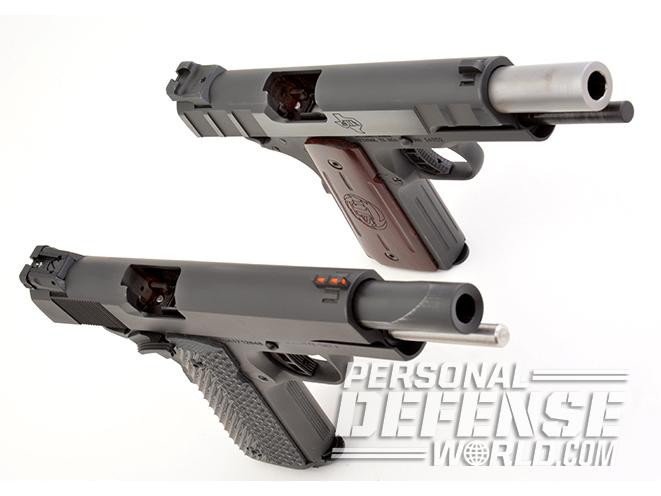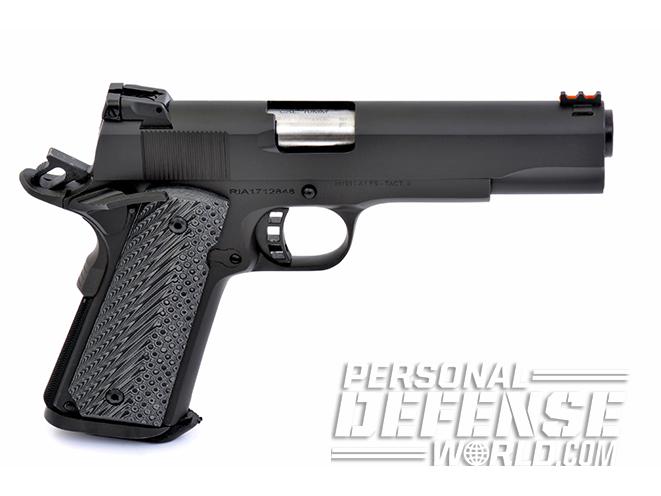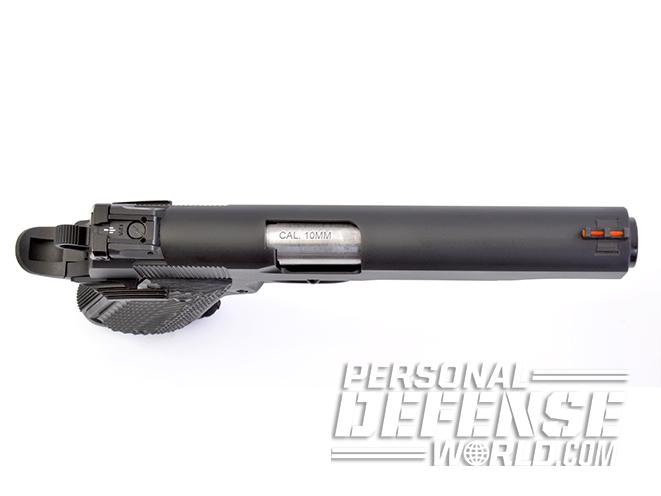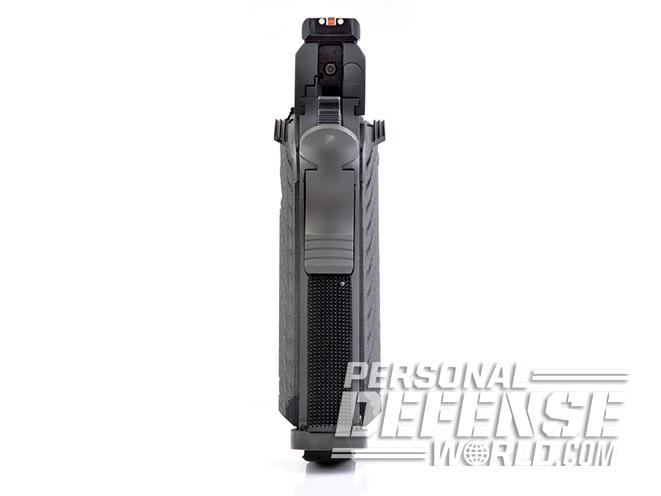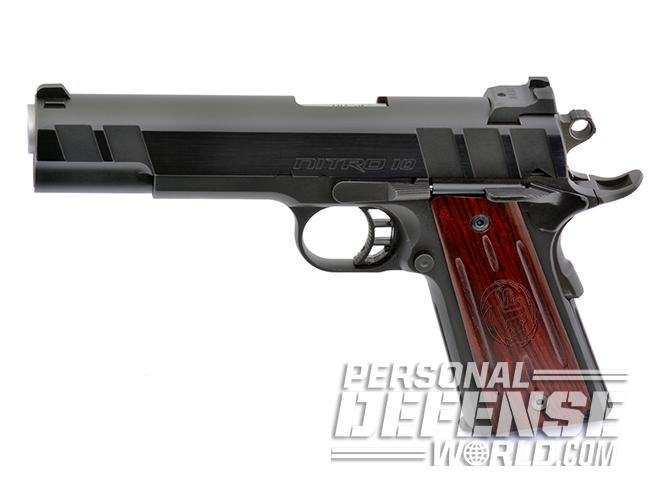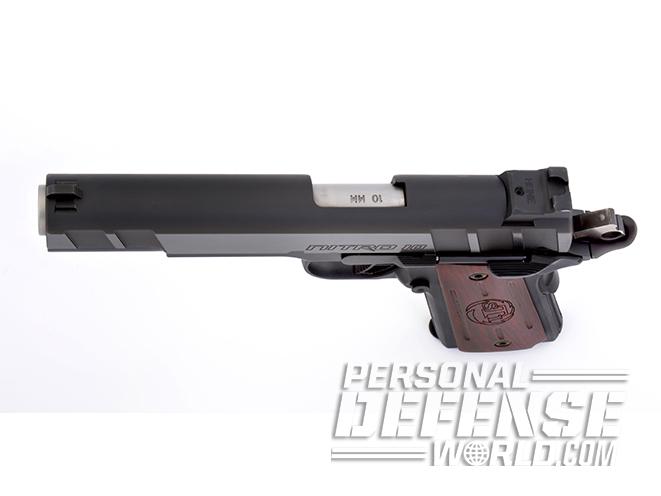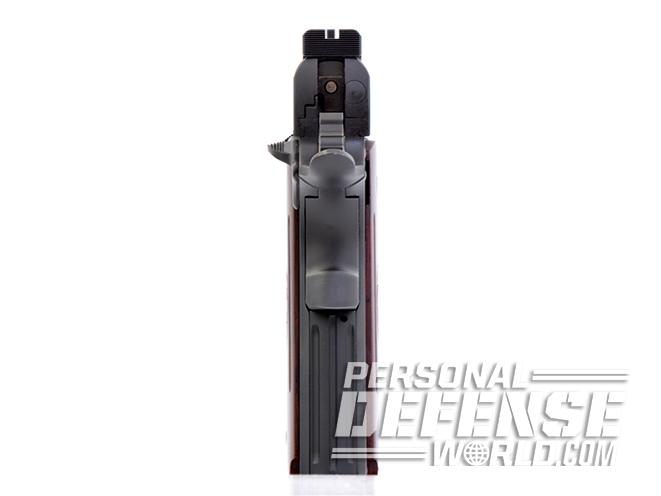The 10mm is like a weed; if you don’t pull the roots, it comes back. At least for the 10mm, it’s a good thing the roots were very deep. The caliber’s resurgence over the last few years has been welcomed by hunters, competitive shooters and law enforcement alike. And in truth, the 10mm pistol round never really went away. It just fell from grace with FBI field agents in the early 1990s, which is where the 10mm’s story actually began.
The 10mm round was developed by legendary shootist Lt. Col. Jeff Cooper and adopted by the Federal Bureau of Investigation as standard issue for field agents in 1989-90. Packing new 10mm Smith & Wesson Model 1076 semi-autos immediately gave agents more firepower (a requirement established by the FBI after the ill-fated 1986 Miami shootout that left two agents dead and five others wounded). The 10mm was expected to have more manageable recoil and greater accuracy than the .45 ACP and be available in a smaller-framed gun than a 1911, but, as it turned out, not all FBI field agents had Cooper’s shooting skills. Rather than becoming a solution, the 10mm turned into a short-lived stopgap that was taken out of service, along with the S&W 1076, for FBI field agents and replaced with the .40 S&W in 1991. The S&W Model 1076 was the last 10mm model.
The 10mm cartridge, however, was no wildcat. It had, in fact, proven itself in the field, and FBI SWAT and hostage rescue teams, various law enforcement special response teams and elements of U.S. military spec ops still use the 10mm today rather than .40 S&W or .45 ACP. The caliber also found a home with handgun hunters who wanted a standard-sized semi-auto pistol chambered in a high-velocity, flat-shooting round that had exceptional stopping power. The 10mm also piqued the interest of competitive shooters keen for high-performance calibers. The majority of 1911 gun makers, however, were not nearly as enthusiastic 25 years ago as Colt was when it came to building a 1911A1 with the necessary tolerances demanded by the 10mm round.
Advertisement — Continue Reading Below
Today that is hardly the case as there are numerous 1911 models available in 10mm, most differentiated by standard features and price. It essentially depends on the manufacturer and the desired level of quality and performance for the money. The differences can be fairly distinct depending upon whether the manufacturer is Colt or one of a handful of other American companies producing high-quality 1911s; they all have commensurately high prices. But when you start looking at foreign-made 1911s, the options and the quality are definitely price driven, thus this “Tale of the Tape” pits two very competitive 10mm 1911s against each other, one American made and the other imported.
Rock Ultra FS 10mm Pistol

Based on the Colt Series 70 design and manufactured in the Philippines by Rock Island Armory (Armscor), the Rock Ultra FS comes from one of the largest manufacturers of 1911s in the world. Armscor can build a quality 1911 and tailor its features to specific requirements and price points. The company’s top-end models like the Ultra FS are built to perform with guns costing considerably more. Priced at $745, the Rock Ultra FS is $370 less than the Colt Delta Elite, $335 less than the Kimber Custom TLE II and $854 less than the STI Nitro 10.
- RELATED STORY: Everyday 1911 – The Rock Island Armory Baby Rock .380 ACP
The Rock stacks up with its competition by delivering a lot of standard features that usually come at extra cost. This includes G10 grips; a fully adjustable LPA white-dot rear combat sight; a red fiber-optic front sight; an extended, ambidextrous thumb safety; a skeletonized target trigger with an adjustable overtravel stop; a 5-inch, button-rifled, bull barrel with a full-length guide rod; a Delta-style hammer; a beveled magazine well, a high-cut beavertail grip safety; a finely checkered, flat mainspring housing; and one 8-round magazines. The black Parkerized finish suits the look of the gun and is durable enough to resist most holster wear. Built from 4140 ordnance steel, this is a very solid 1911. There are no rattles as a result of a vault-tight slide-to-frame fit. It’s a lot of gun for $745. (armscor.com; 775-537-1444)
Advertisement — Continue Reading Below
STI Nitro 10

While the Rock Ultra FS has a lot of custom features, the STI Nitro 10 has custom written all over it—from a deep matte blue finish and a machined slide with aggressive, wide front and rear serrations and highly polished flats, to the serrated hammer design and STI’s S-7 sear and titanium hammer strut.
The Nitro 10 has a flat mainspring housing with vertical serrations (matched on the frontstrap); a flat-bottom grip frame; an undercut triggerguard; a skeletonized, polymer target trigger with a vertically serrated shoe and overtravel adjustment; a match-grade, 5-inch, stainless steel, bull barrel with a polished feed ramp and a full-length guide rod; and a single, standard-style thumb safety that works as smoothly as any custom-built 1911 competition pistol. Up top are a Heinie Ledge rear sight with a square notch and a dovetailed, serrated front ramp.
The entire gun is set off by a pair of handsomely lacquered cocobolo STI grip panels. The Nitro 10 also uses a 25-pound-resistance heavy recoil spring to keep the gun running with 10mm rounds, which brings us back to the unusually deep, wide slide serration, which are designed to make the slide easier to grasp when chambering the first round or clearing the gun. The STI comes with one 8-round magazine. (stiguns.com; 512-819-0656)
Advertisement — Continue Reading Below
Shots Downrange
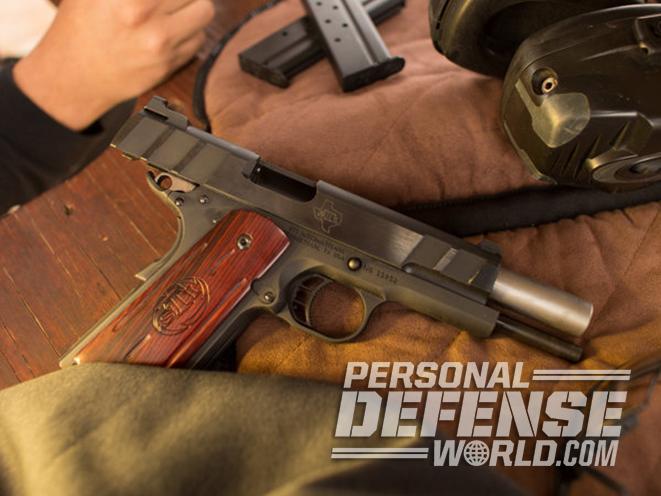
To put the Rock Ultra FS and the STI Nitro 10 to the test, I used HPR’s HyperClean 180-grain JHP ammunition. The trigger pull averaged 5.6 pounds with the Rock Ultra FS and 5.3 pounds on the Nitro 10, both with extremely short travels, crisp breaks, zero overtravel and quick resets. Trigger to trigger, the two are about equal overall.
The STI is a lighter, narrower gun in the hand, while the Rock Ultra FS fits like a tactical weapon with grip and mainspring housing textures that grab your hand (or leather glove) with authority. The near 2-ounce difference in weight feels a lot greater when you pick these guns up. The Rock Ultra FS is a like a Clydesdale, ready to pull its weight, while the Nitro 10 runs like a thoroughbred meant for competition, which justifies its much higher $1,599 retail price.
Advertisement — Continue Reading Below
- RELATED STORY: The STI Hex Tactical SS 4.0 Hits the EDC 1911 Sweet Spot
My friend Mike Harris of Allegheny Trade, who owns both of the guns tested and has experience competing in IDPA and USPSA matches, found them to be consummate shooters when fired off-hand from 25 yards, with the faster-to-reload Ultra FS besting the STI by as much as 0.5 inches with HPR’s 10mm ammo. His average groups with the STI Nitro 10 measured 2.5 inches while the Rock Ultra FS kept rounds at about 2 inches on average.
I had the opposite result, with the STI Nitro 10 being a bit easier for me to handle while I experienced more manageable recoil than with the Rock Ultra FS. My average five-round groups measured 1.95 inches with the Nitro 10 and 2.5 inches with the Rock Ultra FS, which proved a little slower in terms of recovering between shots despite having a slight weight advantage. All of my testing was done firing off-hand using a two-handed hold and a Weaver stance.
The Takeaway
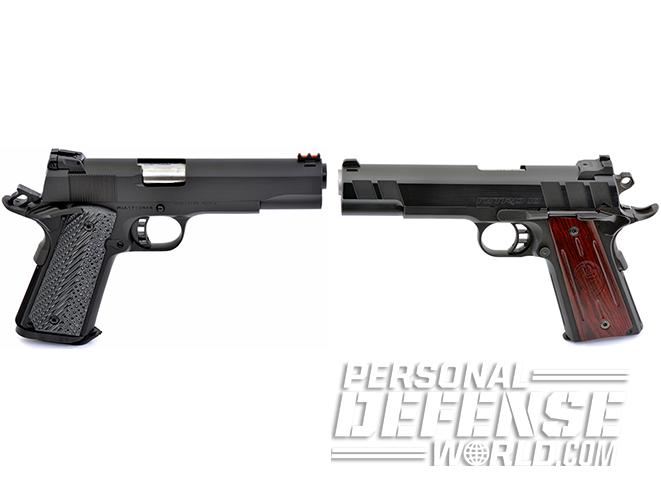
Advertisement — Continue Reading Below
In terms of handling speed, the Rock Ultra FS from Rock Island Armory is quicker to load. If you’re not looking for a tactical pistol, but rather just plain design aesthetics, the STI Nitro 10 stands head and shoulders above the Ultra FS. Both are built to perform, one at a higher price and level of fit and finish, the other to provide the most gun for the money.
As for longevity, only time and total rounds fired will determine the wear factor on either. However, Armscor tests its guns with full-power 10mm rounds for durability, its slides are hand-fitted for each gun, and each comes with a lifetime warranty, all for less than $750. That’s confidence, and for the difference in price you can buy two Rock Ultra FS pistols and still have some cash left over.
The bottom line is, the results of this “Tale of the Tape” can be better measured in aesthetics and dollars and cents rather than in how these two 10mm pistol models perform.
Advertisement — Continue Reading Below
This article was originally published in “Combat Handguns” August 2016. To subscribe to that magazine, visit outdoorgroupstore.com.
